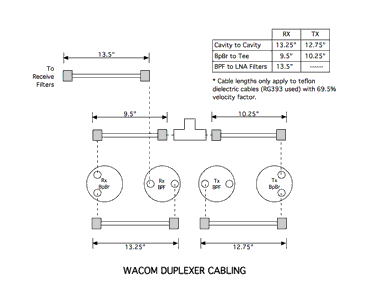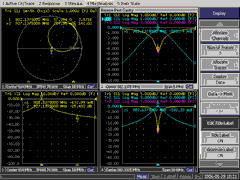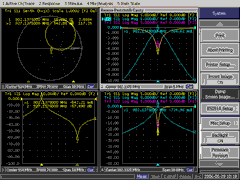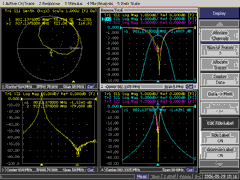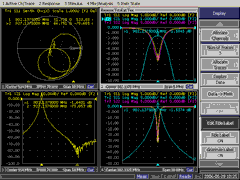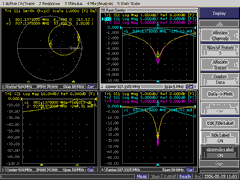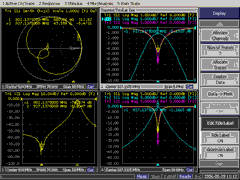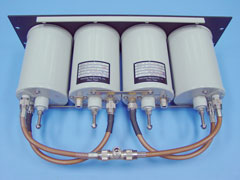
click for larger image (124KB)
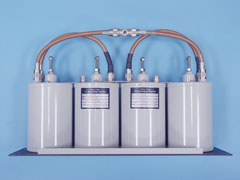
click for larger image (92KB)
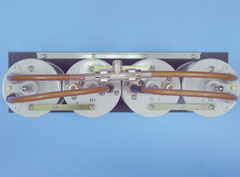
click for larger image (92KB)
To convert the receive panel to a duplexer, the filters simply need to be retuned (one pair for receive and one pair for transmit) and a coupling harness for the single antenna port needs to be constructed. I originally left the RG142 cable in place for coupling between the two cavities in each pair (performance was good with original 8.375" length) and fabricated the bridle between the receiver and transmit sides using UT141 (RG402) semi-rigid cable. This was chosen to simplify the determination of proper lengths on each side of the Tee connector.
When the repeater output power was increased to 90 watts, the coupling cables were changed from RG142 and UT141 to the larger RG393 double shielded teflon cable. The original cables were adequate for the 90 watts, but after noticing some heating of the cables in the transmit path, I decided to embark on the adventure of changing the cables to larger, lower loss cable.
The photos to the left show the final configuration of the duplexer. Since the larger RG393 cable had a larger minimum bend radius than the original RG142 /UT141, I had to reorganize the layout of the filters to accommodate the larger bends of the RG393. The information on this page documents the cable fabrication and performance of the final (RG393) configuration. This link (also at the bottom of the page) points to archived data for the original RG142/UT141 configuration.
